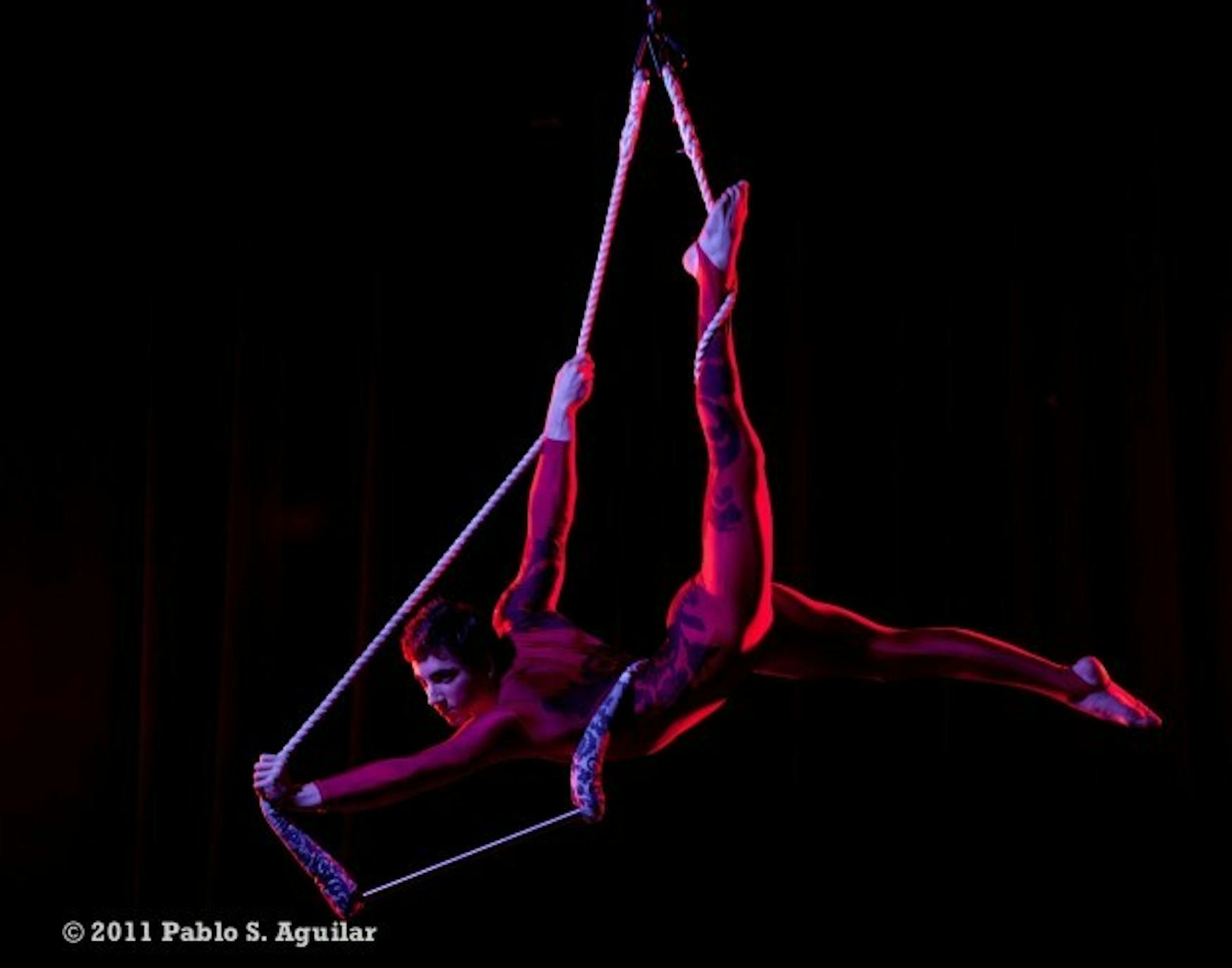Student expresses art with aerial acrobatics
As a kid, I always feared heights, my interest in sports and other athletic activities was negligible, my desire for personal fitness was far from practical and my ability to keep composure in front of a large group was lacking. That is, until I stumbled upon aerial circus arts, which, as cheesy as it sounds, truly did change my life.
When I was 12, my parents showed me a DVD of Cirque du Soleil's production Dralion. I always had been familiar with traditional circuses as a kid. Sure, they were cool, but I never really thought too much more of them. Cirque's production, however, left me completely captivated. Not only did it portray an incredible degree of skill level, but the production itself managed to use circus skill as a basis for a cohesive theatrical production. The deep and emotional music, the pedantically detailed costumes and the distinct "Cirque style" all struck me as bearing an unanticipated level of intention.
My next exposure to Cirque du Soleil was through the live production of Alegr?<>a, which absolutely blew me away. Everything I loved about Dralion was there on stage, remastered and remodeled to fit a new story, new characters and a whole new set of artistic skills. Aerial acts-which feature one or more performers creating artistic poses or dynamic movements on some sort of apparatus (such as a trapeze, hoop or rope) suspended from the ceiling-in these shows were particularly captivating for me for both their skill level and artistic grandeur.
What particularly attracted me to practice aerial arts was that they offered a personal challenge. In a somewhat counterintuitive manner, my fear of heights, lack of pristine athleticism and debilitating stage fright were what motivated me to pursue aerial arts even further. Not only that, but through practice, I found it to be incredibly fun. In the end when all is said and done, no matter how many layers of technique, artistry and theater you introduce into your routine, every aerial performer is really, at heart, just a child on a playground.
Through my six years of serious aerial training, what I can tell you is this: aerial work is painful, exhausting, disorienting, strenuous, physically taxing and, in all seriousness, a downright insane activity for a human body to be doing.
Nonetheless, I have never found any other activity that has granted me a greater sense of mental and physical strength. This is most simply why aerial arts have changed my life, and I leave with no sense of doubt in that statement. I leave now with a better sense of self, higher confidence and something to be truly passionate about. For these reasons, I hold great thanks to this art that somewhat haphazardly entered my life, and it is my hope that the students whom I teach will find similar changes in their inner selves as well.
Practitioners of aerial acrobatics really do span a wide set of demographics. I have seen and worked with both plenty of men and women of all sorts of body types, spanning ages from kids in their pre-teens as well as those who are middle-aged. There are many I know who pursue or intend to pursue aerial professionally, as well as plenty of others who do so recreationally. The discipline bears such an eclectic mix of offerings that enables each practitioner to have their own personal reasons to be involved.
In a performance context, the most apparent reason for being involved would be that the activity serves as an incredibly diverse creative outlet. Similar to dance, it enables one to express him or herself physically through movement, which can bear any degree of abstraction or emotional intensity. In terms of recreational practice, the activity serves both as a great personal activity as well as a social activity. As I have found, it not only offers personal challenge and a great workout regime, but it also allows groups of people to collaborate, share, and build upon each other's ideas, technique, and invented movements.
A lot of the time, the somewhat silly nature of the activity sparks laughter and enjoyment. For instance, this could be just by means of being upside down or spinning, stumbling upon a particularly aesthetic or awkward pose, finding oneself lost in an apparatus or being unexpectedly struck by a skill's disorientating nature. To share a process that is both creative as well as challenging often brings together people of even the most vastly varying of backgrounds.
I never really was the biggest fan of the term "run away and join the circus." Some people have jokingly attached that term to me at some time or another, though I never saw it fitting. I think the underlying theme in my decisions I have made so far surrounding aerial arts is how I have been able to integrate my circus practice, performance and teaching into the life of a college student. That is definitely what I judge at this point to be my most proud accomplishment thus far, and I am excited to see where this path leads.
*



Please note All comments are eligible for publication in The Justice.